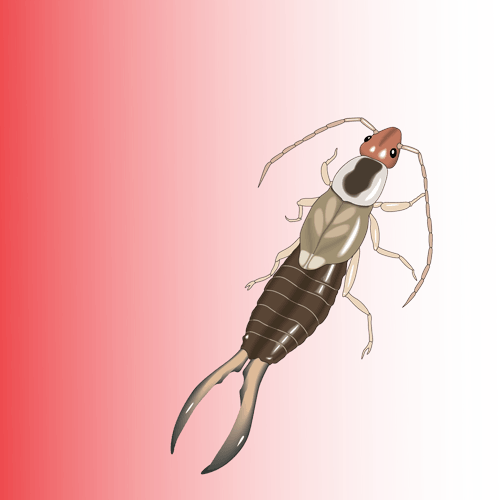Despite their relative harmlessness, earwigs are among the most disliked creepy crawlers of the pest world. Their curved pinchers appear primed for destruction, and ancient myths have long propagated the idea that they purposefully crawl in your ear to feed off your brain or lay eggs. In reality, such an occurrence is no more likely to happen than with other insects. Furthermore, their intimidating pinchers are primarily used for self-defense and romance.
That isn’t to say that they are entirely innocuous. At the mercy of hungry earwigs, your beloved plants and flowers can become ragged and full of holes overnight. They are even capable of causing complete crop and garden destruction, with a particular fondness for flowers, lettuce, celery, and fruit. In 1924, an infestation in Portland, Oregon got so out of hand the city had to declare a state of emergency. The dire situation required pest control measures to save the state’s crops and fruit trees from the wrath of European Earwigs.
Thankfully, they only pose a threat to vegetation and other insects that they see as potential nutrients, such as aphids and grubs. They do not display outward aggression toward humans and do not bite. If accidentally handled, they may retaliate with a weak pinch that is unlikely to break the skin or cause long-lasting damage. Most importantly, they do not transmit disease. Outside of vegetative destruction, their most annoying behavior is the foul-smelling odor they may discharge when disturbed.
Identifying South Carolina Earwigs
Due to their nocturnal nature and ability to move quickly on six legs, spotting a lone bug long enough for conclusive identification may be a rare occurrence. However, they are also social and non-territorial. Earwigs tend to seek out the same places when hiding during the day, and it is not unusual to find them congregating under flowerpots or woodpiles. Scientists theorize that they may produce a pheromone to attract one another. Take extra care during rainy seasons or unusually cold weather, as they are more likely to seek indoor shelter. Though they usually infiltrate homes by hitchhiking on items you carry inside, they can also enter of their own volition through drains or exterior cracks, such as under doors or windows.
Though they are most attracted to growing zones, South Carolina’s humid subtropical climate welcomes them with open arms. Of the 22 species found in the United States, the European Earwig is the most common in South Carolina. Agricultural regions are home to Striped Earwigs, often found in crop fields and gardens. These flexible creatures adapt their habits to whatever food source is available and even eat the nymphs and eggs of their own species if necessary for survival. The Ring-Legged Earwig is also relatively common and can be identified by the faint brown bands on their legs and lack of wings.
Professional Pest Control Services In Greenville, South Carolina
Though they are not well known as a pest species, their numbers can swell until you have a full-blown infestation on your hands. If your garden or flowerpots suffer from the ravenous bugs, you need to call a professional exterminator. The experts at Superior Pest Solutions have over 20 years of experience dealing with pests and can help you fully eradicate an infestation on your property. Contact us today to get rid of irksome earwigs in a pinch.


